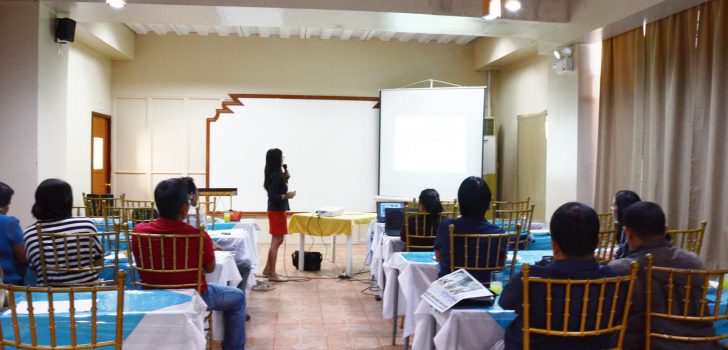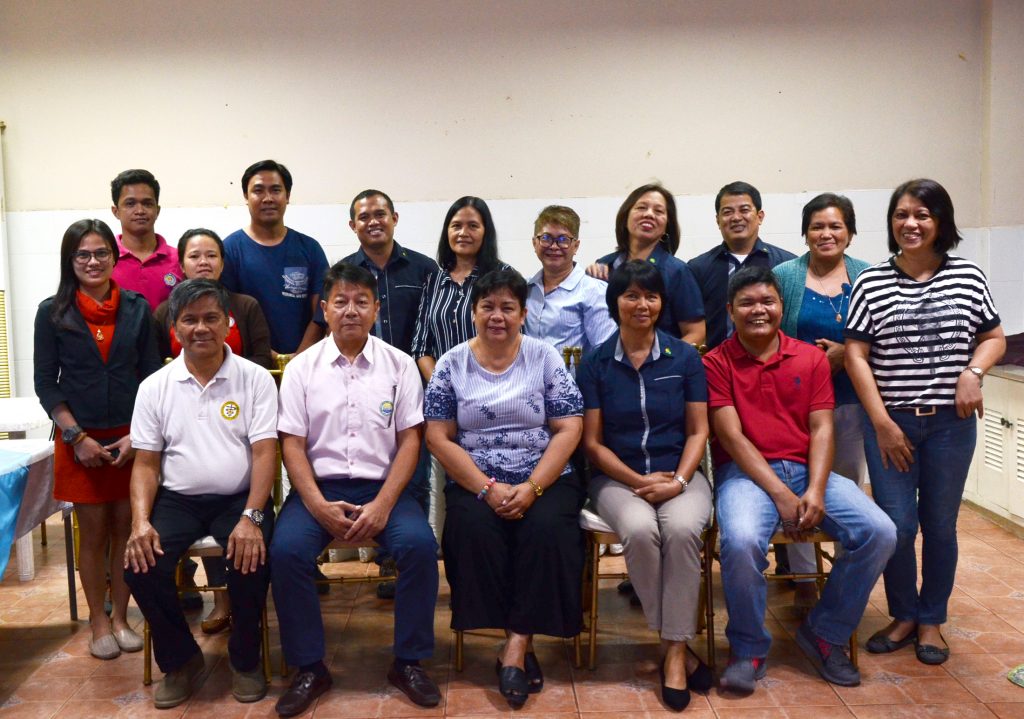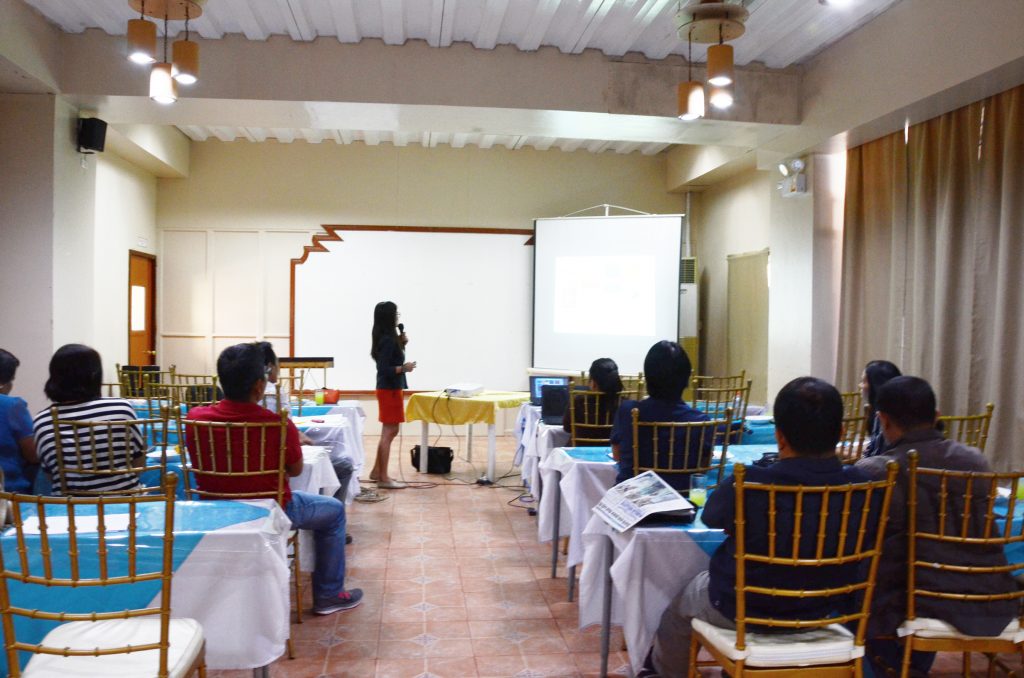 PRDP-Bicol I-PLAN Planning Officer Amabel Bombase presents the briefer on swine industry in Bicol based from the clusterwide value chain analysis on swine during the Finalization of PCIP on Swine in Bicol held in Nabua, Camarines Sur on February 28, 2019.
PRDP-Bicol I-PLAN Planning Officer Amabel Bombase presents the briefer on swine industry in Bicol based from the clusterwide value chain analysis on swine during the Finalization of PCIP on Swine in Bicol held in Nabua, Camarines Sur on February 28, 2019. Bicol PPMIUs assimilate new interventions in the Swine PCIP preparation
The I-PLAN team of the Philippine Rural Development Project of the Department of Agriculture conducted the Finalization of Provincial Commodity Investment Plan (PCIP) for Swine in Bicol with the assistance from experts in the Livestock program, the Regulatory Division and Research Division, in reviewing and enhancing the said plan.
Based on a study conducted by CountryStat in 2017, Bicol Region ranks seventh in the swine volume of production with 5.4% share in 2016 in the whole country. This indicates that swine production is a great opportunity to help the beneficiaries alleviate poverty.
Each of the Provincial Project Management Implementation Unit (PPMIU) representative presented their PCIP using the information gathered from their respective provinces. They identified the possible constraints and gave interventions to the identified interrelated segments and processes on Input Provision, Production, Assembly/Trading, Processing/Transformation, and Sale.
The PCIP for swine envisions to change the current backyard farms to modern swine farms, that is technology-driven and with support facilities such as feed mills, biogas, processing and cold storage facilities and refrigerated van. This improvement is expected to help increase the income of the producers and the local economy.
According to the Philippine Council for Agriculture, Aquatic, and Natural Resources Research and Development (PCAARRD), swine production in the Philippines is the largest sub-sector in the livestock and poultry industry in the country. It ranks next to rice with 18.28% contribution to the total value of agricultural production. Swine production plays a major role in ensuring the country’s food security by providing 60% of the total animal meat consumption of Filipinos.
Per Worldometers estimation, the population of the Philippines reached around P100 million in 2015, and it is increasing at a rate of 2% yearly. About 22 million of hogs are needed to satisfy the estimated 1.5 million kg pork consumption.
The present per capita consumption of pork which is 14.9kg is expected to grew further. This requires the need to increase the local production to meet the growing demand, including the requirement of the processors.
The I-PLAN team and the PPMIUs will conduct series of stakeholders’ consultation to capture the industry situationer in the province and enhance the draft PCIP for swine which will be presented to the Provincial Development Council (PDC) or in the Sangguniang Panlalawigan (SP) for endorsement.
PCIP is a strategic plan that rationalizes the interventions within the various segments of the value chain of commodities that are significant to the province. It is a 3-year rolling consensus plan between the Department of Agriculture and local government units with strong participation from the various stakeholders.
The PCIP shall be the basis for PRDP’s I-BUILD and I-REAP in selecting eligible interventions/subprojects for funding. ### (Michelle Angela G. Alfigura, DA-PRDP RPCO V InfoACE Unit)

The wise and hardworking participants of the Finalization of PCIP for Swine in Bicol from PPMIUs of Albay, Camarines Sur, Camarines Norte, Sorsogon and Catanduanes together with the representatives from the Livestock Program, Regulatory Divion and Research Division of DA RFO 5, with the assistance from the I-PLAN Component Head and Staffs and I-REAP component of PRDP.

